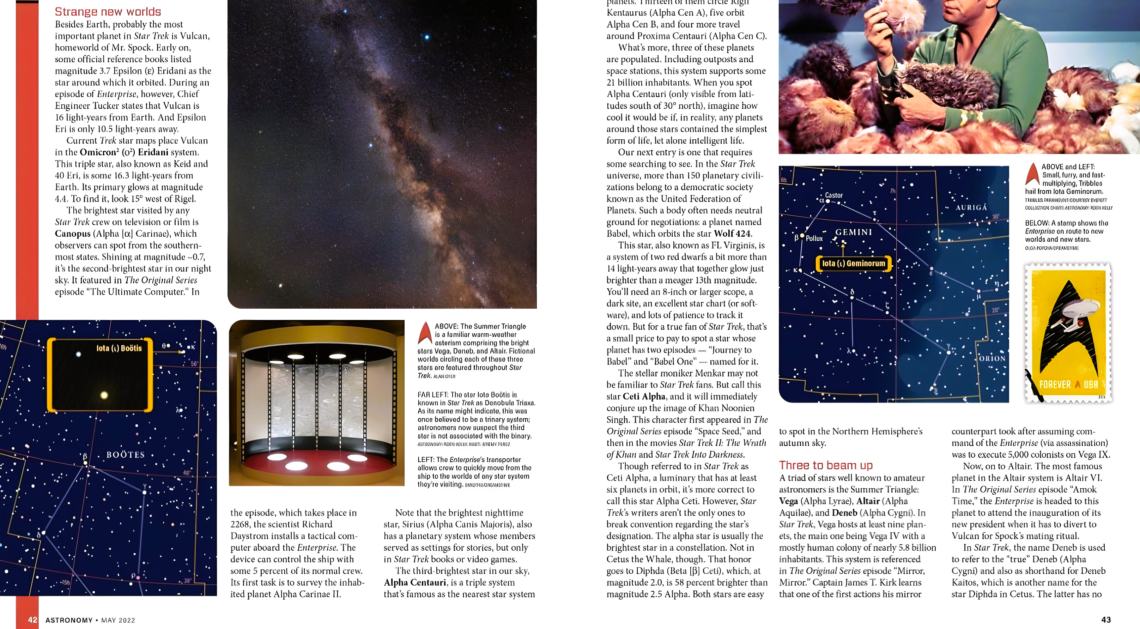
Astronomy Magazine Star Charts
Astronomy has long been a fascination for those who look up at the night sky, marveling at the stars, planets, and constellations. With the right tools, stargazing can transform from a casual hobby into a deeper, more engaging experience. One such tool that elevates the art of stargazing is Astronomy Magazine Star Charts. These charts serve as a vital resource for amateur astronomers and stargazers, providing detailed information about the celestial objects visible in the night sky.
What Are Star Charts?
Star charts, also known as star maps or star atlases, are graphical representations of the night sky. They show the locations of stars, planets, constellations, and other celestial bodies from a specific vantage point on Earth. These charts are designed to help stargazers easily identify objects in the sky and understand the arrangement of stars and constellations during different times of the year. Whether you’re a beginner or an experienced astronomer, star charts are an essential tool for navigating the vastness of the night sky.
The main purpose of star charts is to serve as a guide for anyone interested in exploring the cosmos. They present a two-dimensional view of the night sky, with stars and planets plotted in relation to one another. The chart usually includes markers for major constellations, celestial events, and other astronomical features, making it easier for observers to locate specific objects or track the movements of planets over time. It’s like having a personalized map to help you navigate the stars.
The importance of star charts becomes clear when you consider the vastness of the night sky. Without some sort of reference, identifying stars and planets can be a daunting task. Trying to pick out specific celestial objects from the countless twinkling lights in the sky can feel overwhelming, almost like searching for a needle in a haystack. A good star chart simplifies this process, offering a clear, organized view of the night sky. It provides the necessary context for understanding what you’re seeing and how everything fits together in the grand scheme of the universe.
By using a star chart, you can easily find specific stars, track the paths of planets, and even observe transient phenomena like meteor showers or eclipses. Whether you’re out on a casual stargazing adventure or attempting a more serious observation, having a star chart by your side is crucial for locating celestial objects and enhancing your overall experience. It’s more than just a tool—it’s your personal guide to the universe, helping you unlock the mysteries of the sky.
Astronomy Magazine Star Charts: Your Stargazing Companion
Astronomy Magazine is renowned for providing high-quality star charts that cater to both amateur and experienced astronomers. These star charts are known for their precision and user-friendly design, offering a comprehensive guide to the night sky. Here are some of the key reasons why Astronomy Magazine star charts are your perfect companion for stargazing:
- Accuracy: Astronomy Magazine’s star charts are regularly updated to ensure that the celestial events, star positions, and planetary movements are current. This level of precision ensures that you’re always looking at the right spots in the sky at the right time.
- Clarity: With clear, easy-to-read layouts, these star charts make it simple to locate stars, planets, constellations, and other celestial phenomena. Whether you’re using it for quick reference or detailed study, the charts are designed for effortless navigation.
- Educational: These charts are not only guides but also learning tools. Each star chart is often accompanied by explanations, helpful tips, and suggestions for beginners. Whether you’re just starting your astronomy journey or trying to expand your knowledge, these charts help you learn as you observe.
- Comprehensive Coverage: Astronomy Magazine’s star charts cover a wide variety of celestial bodies, from the most well-known stars and planets to more obscure deep-sky objects. This extensive range of objects ensures that you can explore the full scope of the night sky and not miss out on any fascinating celestial sights.
- Tailored for Your Location and Time: These star charts are customized based on your location and the time of year, providing an accurate and specific view of the night sky where you are. This makes it easier to observe the right objects at the right time, making your stargazing experience more enjoyable and rewarding.
- User-Friendly Features: The star charts are designed with the stargazer in mind, incorporating helpful features like gridlines, coordinate systems, and magnification options to guide you through the sky with ease. These tools simplify complex celestial navigation, making it accessible for everyone.
- Perfect for All Levels: Whether you’re a seasoned astronomer or a first-time stargazer, Astronomy Magazine’s star charts are designed to cater to all levels of expertise. With clear explanations and step-by-step guides, even those new to astronomy can quickly become proficient at identifying stars and other celestial objects.
- Visual Appeal: The aesthetic design of the charts makes them not only useful but also enjoyable to look at. The visual clarity and attention to detail make the charts not just functional but visually appealing, adding an extra dimension to your stargazing experience.
How to Use a Star Chart
| Step | Action | Why It’s Important | Tools or Features to Use | Tips for Success |
| Determine Your Location | Identify your exact geographical location. | The sky looks different from various points on Earth, so knowing your location is key. | Latitude and longitude information. Some charts are location-specific. | If you’re unsure of your location, use a GPS or a star chart app to help. |
| Choose the Right Time | Select the correct time of year and time of day for your observation. | The positions of celestial objects change based on time. | Check the date and time the chart is designed for. | Make sure to select charts that match the specific time you’re stargazing. |
| Align the Chart | Line up the star chart with the sky based on your location and the time. | Aligning the chart correctly is crucial for matching the chart’s stars with the real sky. | Use rotating star charts or adjust printed charts manually. | Practice aligning the chart at different times of the night to get better at it. |
| Start Identifying Stars and Constellations | Look up at the sky and match stars and constellations from the chart. | Helps you visually connect the chart with real celestial objects. | Use the gridlines on the chart for orientation. | Begin with the most prominent stars and constellations for easier identification. |
| Practice and Improve | Regularly use the chart and spend time observing. | With practice, you’ll get faster at identifying stars and constellations. | Take note of the constellations you recognize and gradually add more. | The more you practice, the more familiar you’ll become with the sky. |
Types of Astronomy Star Charts
Star charts come in various forms, each designed to meet the needs of different types of stargazers. Whether you’re someone who prefers the traditional approach or embraces technology, there’s a star chart for every preference. These charts help you navigate the night sky, locate stars, planets, and constellations, and explore the universe.
Printed star charts are the most traditional form of sky maps. These charts are typically found in astronomy magazines like Astronomy Magazine and are physical, paper-based representations of the night sky. They are straightforward to use and don’t require any technology, making them perfect for outdoor stargazing sessions. Their simplicity is part of their appeal—just grab your chart and head outside to begin observing the sky. Printed charts are often clear and detailed, providing a high level of accuracy for your location and the time of year.
With the rise of technology, many stargazers have turned to digital star charts. These come in the form of apps or software programs that you can install on your computer or smartphone. Popular apps like Stellarium and SkySafari offer interactive features, such as zooming in on specific stars, planets, and constellations. Digital star charts are highly convenient because they can be easily updated to reflect the latest celestial events. They allow users to explore the sky in a more flexible and customizable way, offering features like real-time tracking, alerts, and the ability to view different regions of the sky from any location.
Interactive sky charts are another modern innovation. These charts allow users to click or tap on celestial objects to learn more about them. Ideal for both beginners and experienced astronomers, interactive charts provide additional context and educational information about stars, planets, and constellations. With this type of chart, you can engage with the sky in a deeper way, discovering facts, histories, and scientific details about the objects you’re observing. This makes them especially useful for those who want to learn more about astronomy while exploring the stars.
Features of Astronomy Magazine Star Charts
- Monthly Sky Maps
Astronomy Magazine provides monthly star charts that are tailored to the current time of year. These charts allow stargazers to track which stars, planets, and constellations are visible during a particular month, making it easier to plan stargazing sessions accordingly. - Detailed Descriptions of Celestial Objects
Each star chart in Astronomy Magazine often includes descriptions of key celestial objects. These descriptions provide information about visible stars, planets, deep-sky objects, asteroids, and comets for that specific month, enriching the stargazing experience. - Planetary Positions
The star charts feature the positions of the planets, helping users track their movements across the sky. These charts show exactly where each planet will be during the month, making it easier to follow their paths and observe them as they shift. - Seasonal Changes
Astronomy Magazine’s star charts take into account the seasonal changes in the night sky. As the stars and constellations shift with the seasons, these charts help you understand how the sky evolves over the course of the year, offering a broader perspective on celestial movement.
Tips for Effective Stargazing with Star Charts
| Tip | Description | Benefits | Tools Needed | Additional Notes |
| Use a Red Light | A red light helps preserve your night vision while reading the star chart. | Keeps your eyes adapted to the dark. | Red flashlight or red filter. | Avoid white light as it ruins your night vision. |
| Start with Familiar Constellations | Begin with easily recognizable constellations, like the Big Dipper or Orion’s Belt, to build confidence. | Easier to spot and gives you a sense of achievement. | Star chart, possibly a telescope for closer viewing. | These constellations are visible year-round in many regions. |
| Track the Moon | Use the Moon’s position to navigate other celestial objects. Star charts often show the Moon’s phase and location. | The Moon serves as a reference point, helping you find other objects. | Star chart, sometimes a telescope for a closer view of the Moon. | The Moon’s phases change throughout the month, so tracking it adds variety to your stargazing. |
| Go Beyond the Stars | Use your star chart to find deep-sky objects such as nebulae, galaxies, and star clusters. | Expands your stargazing experience beyond just stars and planets. | Telescope (for clearer views) | Deep-sky objects often require longer exposure time and patience but offer incredible views. |
The Best Times to Use a Star Chart
The best time to use a star chart is when the sky is clear and dark. Cloudy or overcast skies will obscure your view of the stars, making it difficult to identify celestial objects. To get the most out of your stargazing experience, try to find a location far away from the light pollution of city streets. Places like dark sky parks or rural areas are ideal, as they provide minimal artificial light, allowing you to see even the faintest stars and deep-sky objects.
The new moon phase is the perfect time for stargazing. During this phase, the sky is at its darkest, making it easier to spot distant stars, planets, and galaxies. In contrast, a full moon can be disruptive to your observations. Its bright light tends to wash out the surrounding stars, reducing the visibility of other celestial bodies. Therefore, stargazing during the new moon gives you the clearest and most detailed view of the night sky.
Meteor showers, such as the Perseids or Geminids, offer a unique opportunity for using your star chart. These showers peak at specific times of the year, often providing a spectacular view of falling stars. By consulting your star chart, you can pinpoint the best times for observing meteor showers and track the path of the meteors across the sky, making for an exciting stargazing experience.
Finally, remember that the best stargazing conditions depend on not just the time of year but also the specific time of night. Many star charts provide information about when the most prominent stars and planets will be visible, allowing you to plan your observations around these optimal times for the best experience.




